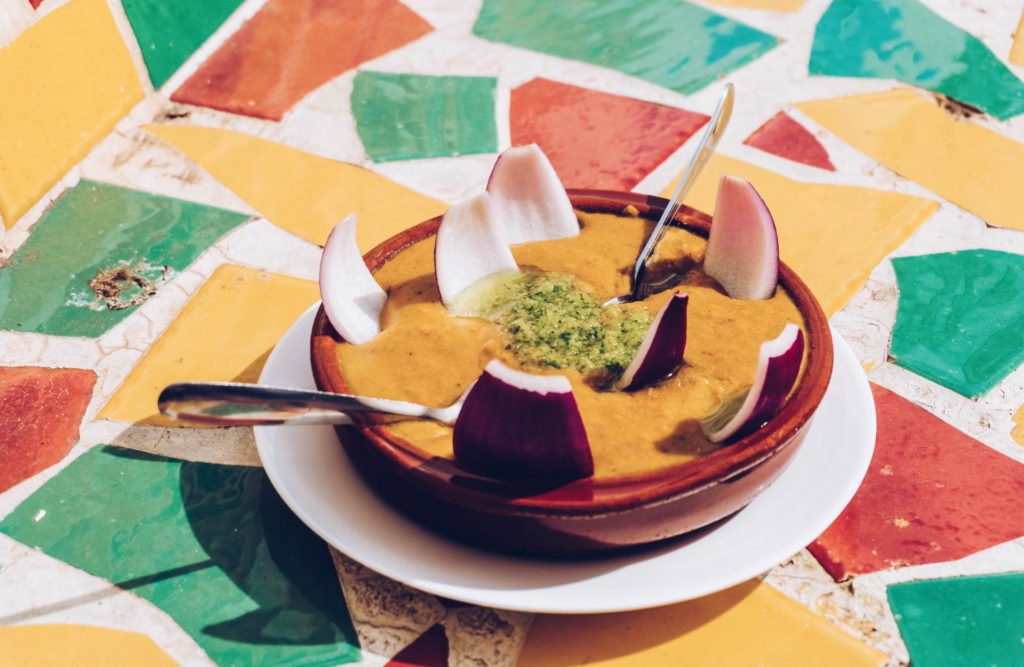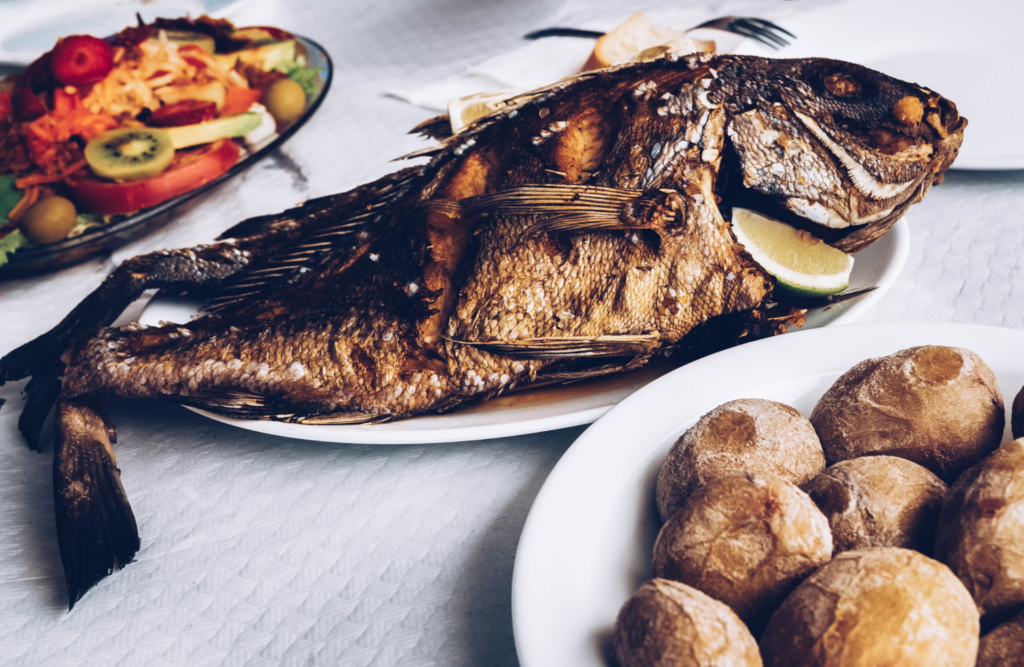When nearly the entire Northern Hemisphere is battling winter blues, it’s time to head somewhere bright and warm. Sunlight boosts mood, fights depression and gives us a little jumpstart to the year.
With a whooping 3,000 hours of sun a year, the Canary Islands, in Spain, are the perfect spot to escape the doom and gloom of European winter. Temperatures in winter can reach 25 degrees in the southern islands, while the northern ones are ideal for outdoor sports such as hiking and biking. Add to this an incredible culture and cuisine, jungles that seem straight out of Jurassic Park, volcanic sand beaches and convivial, welcoming people and you have a winning winter escape.
Flights to the Canary Islands from Europe are affordable year-round, and once there, you can island hop via a ferry. We want you to have the full Canarian experience so we’ve taken a four-side approach: nature, beaches, culture and food. By the end of your getaway, you’ll be an expert on things to do in the Canary Island, all seven of them. Vámonos!
The Canary Islands through their nature
Winter is undoubtedly the best time to explore the striking nature of the Canary Islands—with mild temperatures, hiking is a lot more enjoyable. The Canary Islands and their landscapes are defined by their volcanos. Four of them are still active! This makes for martian-like backdrops wherever you are. Many national parks boast diverse flora and fauna and you’ll feel as if you are on another planet. Bordered by the Atlantic Ocean, the Canaries are also a hotspot for outdoor activities such as surfing, kitesurfing, hiking or scuba diving.
Wherever you are in the Canaries, you’re never far from Teide in Tenerife, the highest peak in Spain at 12,198 feet. Its many eruptions have produced 1,000 species of invertebrates and 168 different plants. Its unique rock formations spread across its 46,925 acres and the park offers 41 hiking routes to choose from. You’ll find a similar vibe at the Timanfaya park in Lanzarote: this is another active volcano that last erupted 300 years ago, tinting its rocks red, orange and yellow. You’ll barely find any vegetation here, but you’ll feel like you’re on the moon!
The Canary Islands boasts some forests and jungles that will remind you that, despite it being European territory, you’re closer to the African continent. Garajonay Park in La Gomera is a fascinating laurel forest with twisty branches covered in moss. Its microclimate makes for a magical environment that you can discover in its 18 hiking routes. Feeling especially adventurous? Take the route up to the Alto de Garajonay, its highest mountain at 4,780 feet. The Bosque de los Tilos in La Palma is a biodiversity explosion, a quiet jungle 15 miles North of La Palma city with two main hiking routes, one taking you up to some natural springs.
At the smaller island of El Hierro you’ll find the El Golfo valley, unique in its kind as it’s open to the ocean, sheltered by 3,280 feet-high cliffs. Head up Mirador de Jinama, a lookout point 3,937 feet-high perpetually covered in clouds, and stare at the white fluffy sea around you. Don’t miss the Los Órganos natural monument in La Gomera: the slow cooling of volcanic materials gives this cliff the shape of a massive church organ that’s only visible from the water. You can book a boat tour to marvel at it!
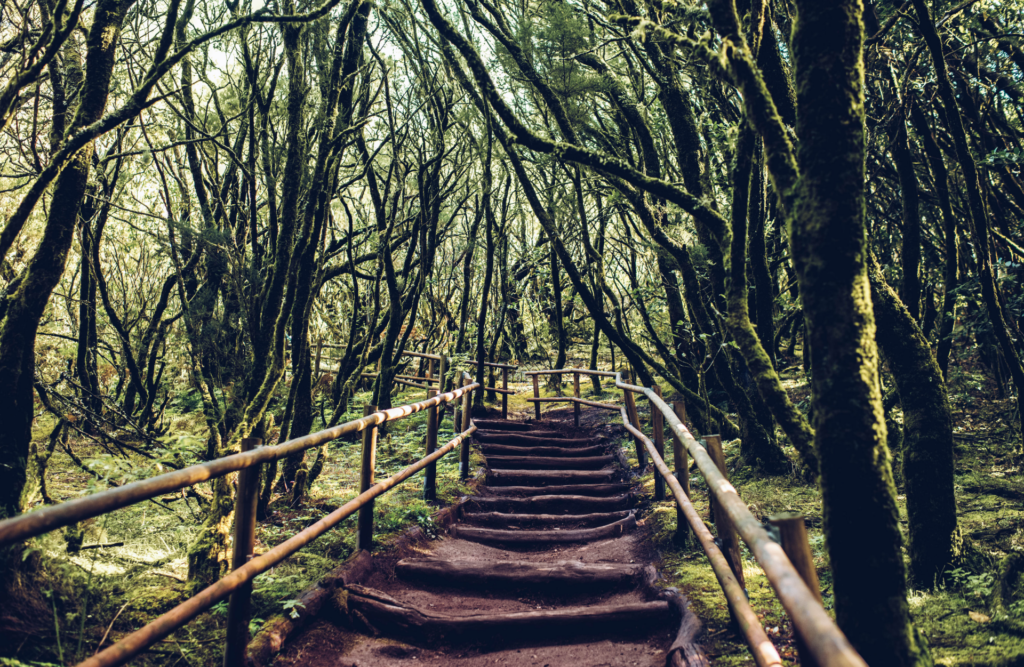
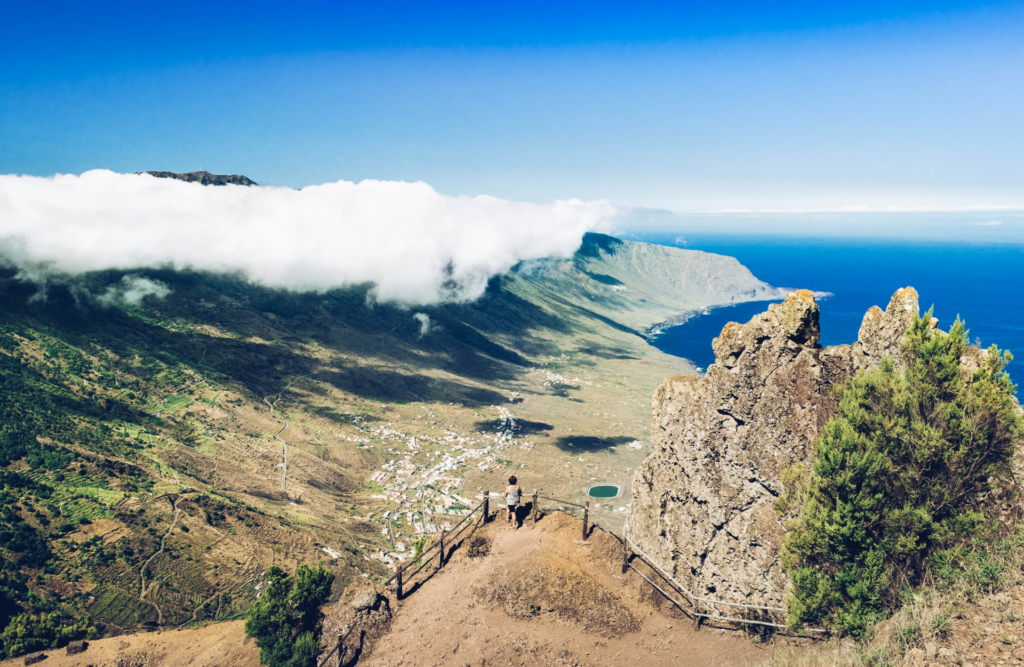
The Canary Islands through their beaches and pools
The Canary Islands are probably best known for their paradisiac qualities, a place where you can go and lie in the sun, go for a swim and get day drunk at your all-inclusive resort. If you want to break free from the most touristy places and find some off-the-radar spots to delight in the temperate Canarian winter, take note of our top beaches and pools in the Canary Islands.
Playa del Aljibe in Fuerteventura is one of the few white-sand beaches in the islands, open to the ocean and surrounded by tall cliffs. You’ll find plenty of waves if you’re into surfing, but maybe don’t venture too far into the water if you’re not an expert swimmer! Traveling with children? The Playa de la Calera in La Gomera is more chill, with tranquil waters. Plus, it has some of the most Instagrammable sunsets.
Moving to Tenerife, the Playa Benijo is a spectacular beach on the north of the island, perfect for those who really want to disconnect. Playa de Famara, in Lanzarote, is a majestic beauty spread across nearly four miles bordering a crag, and a favorite for surfers. When the tide is low, the sun reflects on the wet sand creating a huge mirror.
Not into sand? Charco Azul in La Palma is a natural pool of surreal turquoise waters, protected from the ocean waves and with all the amenities of a hotel: kiddie pool, showers, stairs, etc. The Pozo de las Calcosas in El Hierro is a cozy natural bay. Don’t miss the little houses in the village—these are ancestral homes made with materials no longer in use.
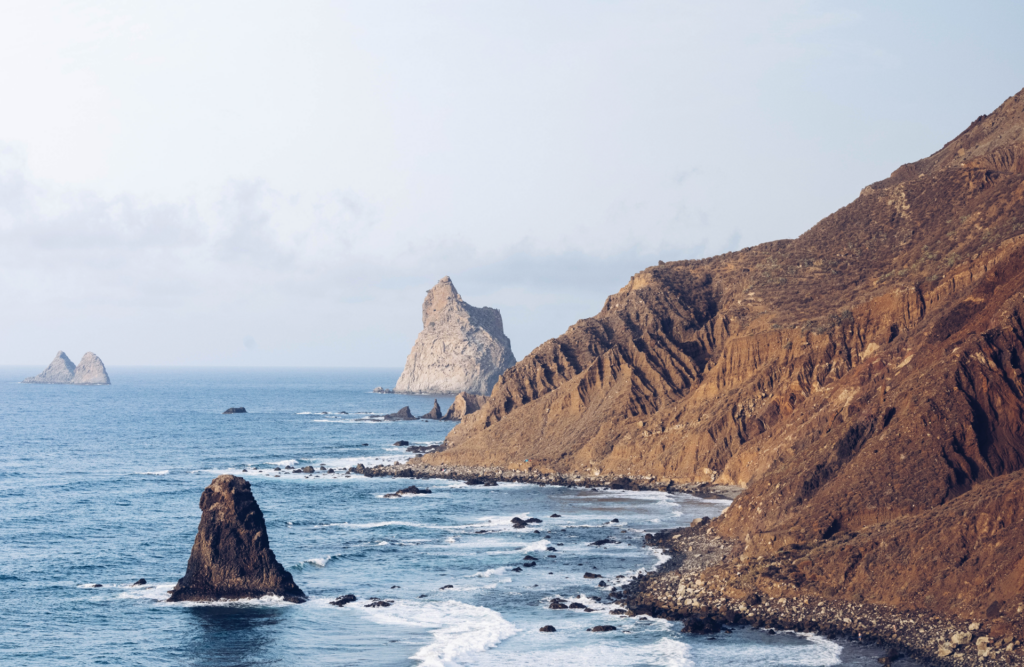

The Canary Islands through their culture
It’s a little-known fact that the Canary Islands were the conquistadors’ first stop on their way to colonize a big chunk of the world back in the 15th and 16th centuries. The history of the Canary Islands is fascinating and reflects a lot of what would happen later in the Americas. This is still visible in some old towns such as San Cristóbal de la Laguna in Tenerife, where the streets have remained as they were in the 1500s. The colonial mansions are painted in pastel colors and their patios open to small boutiques and restaurants. If it feels like you’re in the Caribbean, there’s a good reason for that—the town was used as the model to build Latin American cities such as Havana, Cuba, and Lima, Peru. The entirety of San Cristóbal garnered UNESCO World Heritage Site status.
If you visit Lanzarote, explore César Manrique’s work. This multidisciplinary artist and architect used his art as a love letter to his homeland, and built many installations and buildings that integrated into the island’s nature, instead of disrupting it. The Jameos del Agua is probably the best example of that: Manrique took volcanic caves and turned them into a communal space with internal lagoons, a restaurant and concert site for locals. You can also visit his former home in Tahíche, which is the headquarters of the César Manrique Foundation.
The colonial legacy of the first Spaniards can also be seen in the old towns of Valverde in El Hierro or the Vegueta neighbourhood in Las Palmas de Gran Canaria, but the Canaries have attracted settlers of other nationalities as well. Norman explorer Jean de Bethencourt arrived in Fuerteventura and founded the town of Betancuria, located in an inland valley, in 1404. Visit the ruins of the Saint Bonaventure Convent or the Archeological Museum. The latter showcases the lives of the Guanche people, the indigenous habitants of the Canary Islands.
If you’re lucky to visit in February, dance in the Gran Canaria Carnival. This explosion of color and joy in the streets, which dates back to 1574, lasts for a whole week and culminates with a gala where the Queen of Carnival is chosen. For a unique escape, visit the town of Hermigua in La Gomera, where people still communicate in an ancestral language of whistles. The silbo gomero language is UNESCO protected and still taught at the island schools.
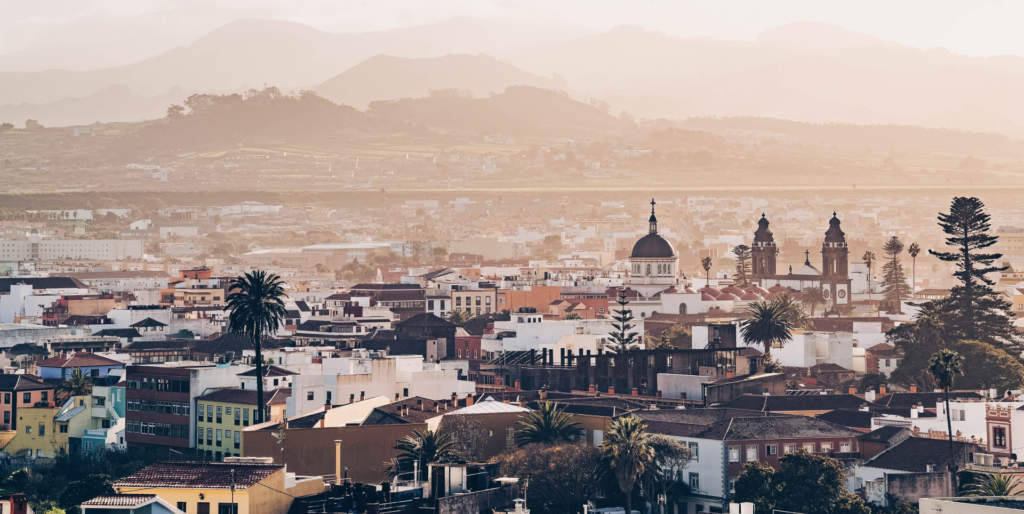
The Canary Islands through their food
With this colonial past, so close to African and European cultures, you can probably imagine that Canarian Island cuisine is a lavish mishmash of flavors and textures. In the past decade, it has become a foodie paradise, with several restaurants that boast one or two Michelin stars.
Living in an archipelago, Canarians fish throughout the year. You’ll find many restaurants with freshly caught fish and seafood, especially vieja fish, grouper or jack fish. Other typical dishes are gofio (a type of flour), watercress soup, filled bubangos (a sort of zucchini) and roasted potatoes with mojo, a spicy local sauce. Food is a huge part of Canarian identity and culture, and they love to share it with visitors.
El Risco in Famara, Lanzarote, is a good example of this. This quintessentially Canarian restaurant that overlooks the ocean puts a modern twist on traditional food, with products from local markets. Located in Tenerife, Etéreo by Pedro Nel mixes Spanish and Canarian cuisine with his native Colombian flavors, focusing on meat.
Head over to Maguja in Gran Canaria where chef Braulio Rodríguez uses local produce to create the best rice dishes on the island, or head to the top floor of the Bohemia Hotel to enjoy a meal with a view of Maspalomas at Rte 360º. Chef Juan Bertoli gives every dish a soul and a story, and Raimundo Palomar prepares the best cocktails in town.
Want an even more authentic experience? La Chalana in La Gomera is a beach bar with a very informal vibe that focuses on seafood at affordable prices. El Refugio in El Hierro offers fresh fish on the daily—don’t miss their grilled options including fish churros!
La Jaira de Demian in Fuerteventura is a modern gastrobar with plenty of gluten-free options. Prices are fair and the dishes are a delight. Finally, Lilium in Arrecife, Lanzarote, offers terrace seating overlooking the marina and an update on Canarian dishes such as banana croquettes and ropa vieja, a chickpea stew.

